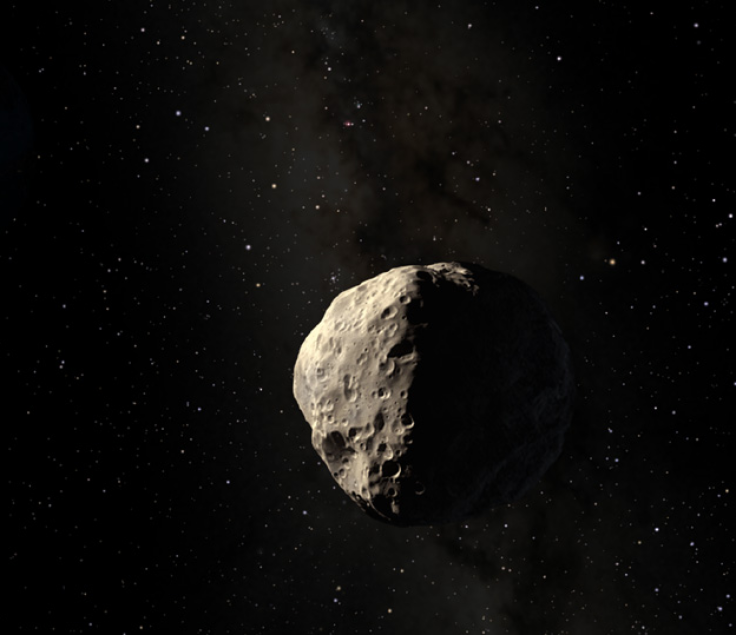Stopping An Asteroid With... Paintballs?

If a world-flattening asteroid is on the approach, do we get a team of blue-collar oil drillers to plant a nuclear bomb on it in a daring mission? Or, should we aim some paintballs at it, as an MIT graduate student suggests?
Aeronautics researcher Sung Wook Paek’s unconventional idea relies on the concept of albedo, or reflectivity. Photons bouncing off of an object could potentially provide enough force to push an asteroid away from Earth, but only if there were a lot of them. To raise the albedo of an asteroid, you would want to make it as white as possible, which is where the paintballs come in.
Attacking an asteroid with a barrage of pellets launched from a spaceship could provide enough force to knock the threatening object away, both from the impact of the pellets themselves and the increased photon-bouncing that the asteroid would experience after its new paint job.
Paek’s idea got the seal of approval from the United Nations’ Space Generation Advisory Council, which awarded him top honors in its 2012 Move an Asteroid Technical Paper Competition.
In his paper, Paek described a hypothetical implementation of his plan using the real-life asteroid Apophis. Apophis is about two football fields across, weighs 27 gigatons and there is a slim chance that it could strike the earth in either 2029 or 2036.
Based on the asteroid’s size and period of rotation, Paek estimated that it would take up to 20 years for solar radiation to nudge it away from an impact course with Earth. Since traditional rockets have violent takeoffs that could possibly cause the paintballs to burst prematurely, the more practical way of delivering the paintballs would be to make them in orbit, then use spacecraft to deliver them.
Paek’s idea builds upon work by the winner of last year’s contest, University of Strathclyde researcher Alison Gibbings. She proposed using a ‘smart cloud’ of tiny particles, each of which would essentially be a ‘spacecraft on a chip.’ One advantage of using the smart cloud, Gibbings wrote, is that it lessens the risk that the asteroid would break up into smaller but still-deadly pieces.
Winners in previous years have approached the asteroid problem from different angles. In 2009, Finnish researcher Sini Merikallio won for a proposal to deflect an asteroid using an electric solar wind sail. With sufficient advanced notice, astronauts could attach one or more charged tethers, which convert momentum from solar wind particles into acceleration, to the asteroid, tugging it out of harm’s way.
NASA Near Earth Objects Observation Program manager Lindley Johnson called Paek’s paintball idea an innovative variation in a statement Friday.
“It is very important that we develop and test a few deflection techniques sufficiently so that we know we have a viable ‘toolbox’ of deflection capabilities to implement when we inevitably discover an asteroid on an impact trajectory,” Johnson said.
© Copyright IBTimes 2024. All rights reserved.











